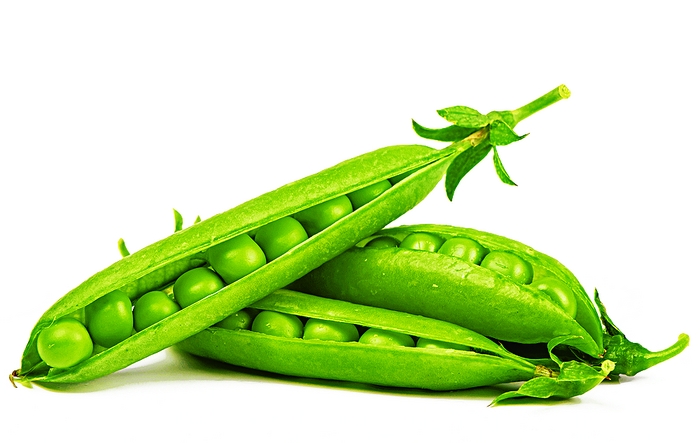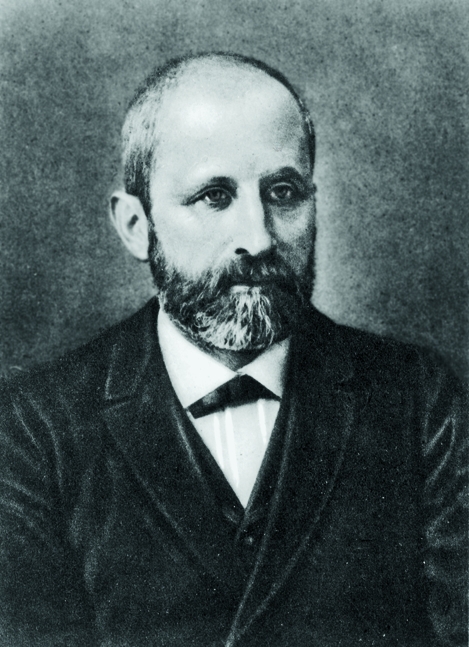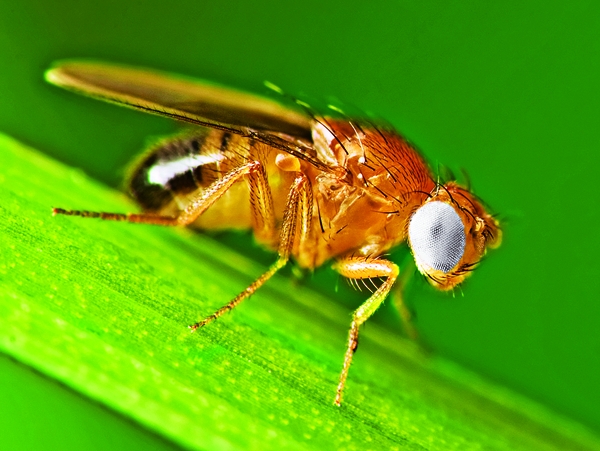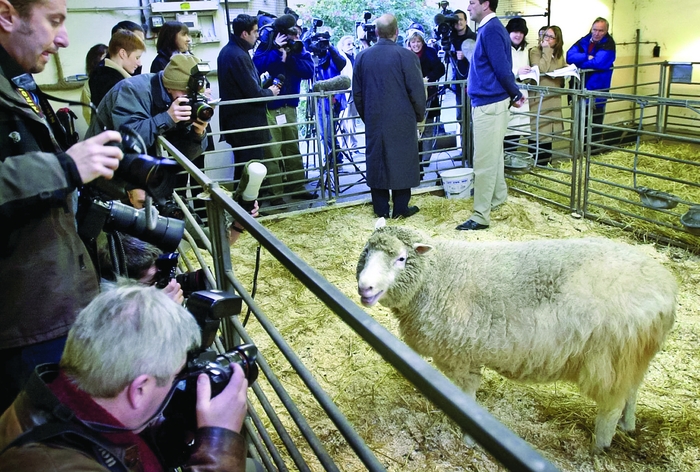Advertisement
Grab your lab coat. Let's get started
Welcome!
Welcome!
Create an account below to get 6 C&EN articles per month, receive newsletters and more - all free.
It seems this is your first time logging in online. Please enter the following information to continue.
As an ACS member you automatically get access to this site. All we need is few more details to create your reading experience.
Not you? Sign in with a different account.
Not you? Sign in with a different account.
ERROR 1
ERROR 1
ERROR 2
ERROR 2
ERROR 2
ERROR 2
ERROR 2
Password and Confirm password must match.
If you have an ACS member number, please enter it here so we can link this account to your membership. (optional)
ERROR 2
ACS values your privacy. By submitting your information, you are gaining access to C&EN and subscribing to our weekly newsletter. We use the information you provide to make your reading experience better, and we will never sell your data to third party members.
Biological Chemistry
A Genetic Network Narrative
Science writer Sam Kean dives into a personal, historical, and scientific exploration of genetics
by Nader Heidari
December 17, 2012
| A version of this story appeared in
Volume 90, Issue 51

In the winding double helix of DNA, arrangements consisting of the nucleotides guanine, cytosine, adenine, and thymine encode blueprints for protein synthesis. Pieced together somewhat haphazardly over the eons, a history of the container organism, and really life itself, is written within and alongside the functional strands.
The concept of DNA-as-story has been explored before in books such as “Vas: An Opera in Flatland,” by Steve Tomasula. “Vas” explores the relation of the human body—and therefore its genes—to text, and the idea may not be so far-fetched. Besides man-made examples, such as a Harvard University team’s encoding of a 53,426-page book in DNA (C&EN, Aug. 20, page 29), the strands both code for proteins and contain leftover bits of information from mutations, viruses, and other DNA-modifying things that shed light on the past, as well as the future, of life.
Sam Kean’s newest book, “The Violinist’s Thumb: And Other Lost Tales of Love, War, and Genius, as Written by Our Genetic Code,” is much like a double helix in itself, twisting between explanations of gene science and stories of the characters and institutions behind modern DNA research. It is not the most rigorous book on genetics, nor is that to be expected. The book is rather a scattered collection of stories, facts, speculation, and humor. A significant amount of text is irreverent biography, and the stories Kean tells all eventually lead to some commentary on genetics or humanity as a whole.
SNIPPETS S
Some notable events in the history of DNA research.
1866
Gregor Mendel publishes his paper on pea plant inheritance.

1869
Friedrich Miescher (left) discovers nucleic acids in cell nuclei.

1905
William Bateson establishes the term genetics.
1910
White-eyed fruit fly emerges in Thomas Hunt Morgan’s “fly room”; Morgan discovers that genes travel on chromosomes.

1953
James Watson and Francis Crick publish double-helix model for DNA.
1965
Lynn Margulis pushes theory that mitochondria were once independent microbes.
1990
Human Genome Project begins.
1997
Dolly, the first cloned sheep, is born.

2003
Human Genome Project completed.
“The Violinist’s Thumb” is meant for a lay audience, and the writing is indeed accessible. Kean never becomes overly technical nor talks down to the reader. He regularly dives into some of the nitty-gritty of gene science, providing occasional footnotes for readers who want more information. Kean is able to leaven his prose with well-timed, impious, and occasionally dark humor.
The book gives some minor figures in the history of DNA research more attention than they might receive in, say, a textbook. Kean does pay some attention to various genetics pioneers—among them Gregor Mendel, Charles Darwin, James Watson, and Francis Crick—but refreshingly, he introduces us to some of the less-recognized people in the history of genetics research. For example, he writes about Friedrich Miescher, a researcher who braved the Swiss winter to isolate nucleic acids. He also peppers the book with explorers, artists, and other nonscientists who somehow overlap the history of the development of genetic concepts.
The story behind the book’s title begins with legendary violinist Niccolò Paganini. Paganini was born with a genetic condition that made his hands frighteningly flexible, allowing him to play the violin so well that rumors spread that he had sold his soul to the devil for his skill. The violinist once showed off the flexibility and power of his hands by crushing a plate using only his thumb. Unfortunately, the defect, which Kean speculates was Ehlers-Danlos syndrome, ultimately left him weak and sickly. Paganini’s eventual death, however, might be attributed to the mercury-based treatments he consumed rather than the disease itself. Paganini’s thumb thus serves as a symbol of one of Kean’s central themes throughout the book: Genes can be a blessing, a curse, or both.
The exploration of genes in “The Violinist’s Thumb” is bookended by Kean’s personal experience with his genetic code. In the introduction, Kean details his decision to have his genetic code sequenced for what has become a relatively nominal fee. The report produced with the sequencing contains a list of various possible ailments and risk factors, one for a disease that Kean dreads. Of course, because Kean enjoys building suspense throughout the text, the results of this test—and its implications—are withheld until the book’s end.
Throughout the book, Kean details how genetics and history contradict our high opinions of ourselves. For example, the gene that allows humans to consume meat in large quantities likely came about as a result of lowly scavenging rather than gallant hunting, and the premise of mating with close family members to “keep bloodlines pure” tended instead to lead to genetic defects and the infamous fall of the Spanish branch of the Hapsburgs. The book almost seems to revel in debasement of humanity, but it also draws out a sort of fragile beauty by highlighting how the species triumphed without being the biggest, fittest, or strongest organism around. Throughout history, genetic code has both moved humanity forward and produced some humbling reminders about how important mere chance is in life.
One of the fascinating things about “The Violinist’s Thumb” is its scope, taking the reader through the dawn of humanity to modern times. Kean narrates early battles over the mechanisms of heritability, ideologically motivated experiments during the Cold War, the cloning of Dolly the sheep, the mapping of the human genome (and all the politics and squabbles within), as well as many other topics. Any book attempting to map out a narrative of the history and science behind genetics must be somewhat all-encompassing, and Kean has a knack for tying temporally distant events together in entertaining ways.
On a few occasions, a chapter will begin on a topic and later diverge to a seemingly unrelated one, only for Kean to collapse the story lines together in the last few pages. In other chapters, Kean builds suspense, and although it is easy to be tempted to skip ahead, his construction is such that the reader feels the need to stay the course to ensure that nothing is missed, as minor divergences tend to sprout up again in later chapters. Fortunately, anticlimactic endings are rare. One of the most memorable chapters weaves together the story of Willem Barentsz’ Arctic journey for a northeast passage to the East and an explanation of the biological function of vitamin A (technically a small family of compounds). The story eventually culminates in a cautionary tale about how most, if not all, animals should avoid consuming polar bear livers if they don’t plan for their skin to slough off from a vitamin A overdose.
Near the end of the book, Kean begins to explore the ethical problems that have emerged as humanity gains more control over genetics, delving into the topics of transgenic animals, cloning, genetic engineering, and others. Kean does a good job of not taking any overt stands; instead, he builds his narrative around the events and people involved in each controversy.
I recommend “The Violinist’s Thumb” for scientists and lay audiences alike. Kean’s skillful storytelling and his explanations of various topics within genetics make the book easy to grasp and fun to read. The scattered nature of the book is strangely functional: Slow topics are quickly subverted by Kean’s weblike prose, allowing the book to be read both sporadically and from cover to cover with relative ease.
Kean has embedded a DNA-themed message in the text as a treat for code-breaking readers. He invites his audience to try to solve the puzzle and asks them to contact him if they either have found it or have run into trouble figuring it out.
Although Kean’s analysis of genetics sometimes leaves the reader with a sort of deterministic view of DNA, Kean stresses that genes are like the Oracle of Greek legend: The message they provide is cryptic, and it may only make sense in hindsight. Kean eventually reveals the results of his DNA analysis in the book’s epilogue, but his future is still ambiguous.
Nader Heidari is an assistant editor at C&EN.



Join the conversation
Contact the reporter
Submit a Letter to the Editor for publication
Engage with us on Twitter